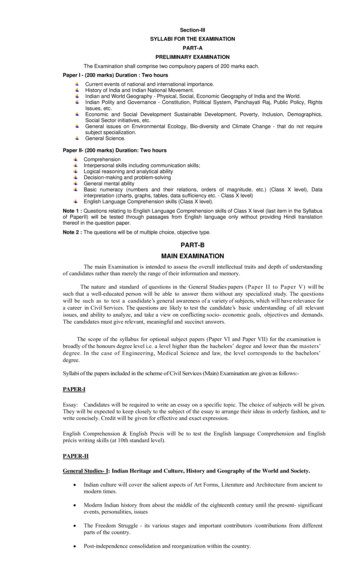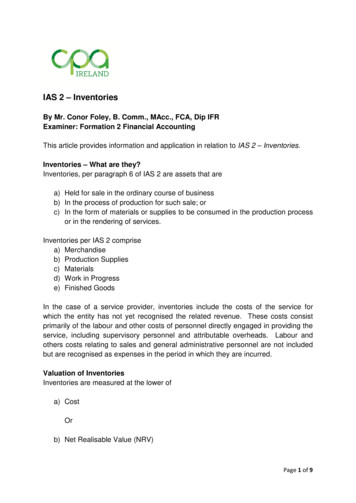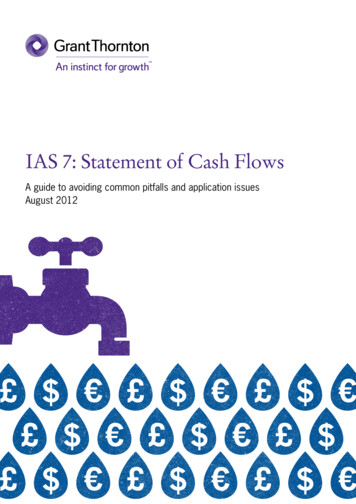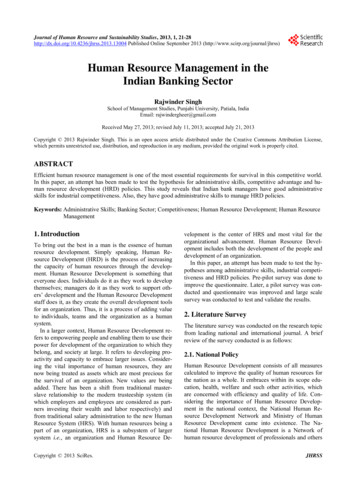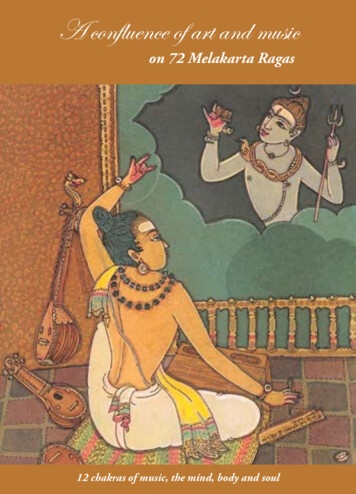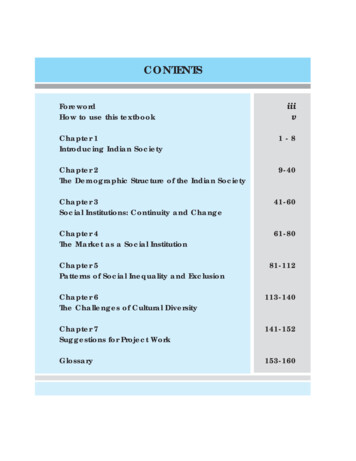
Transcription
CONTENTSForewordHow to use this textbookiiivChapter 1Introducing Indian Society1-8Chapter 2The Demographic Structure of the Indian Society9-40Chapter 3Social Institutions: Continuity and Change41-60Chapter 4The Market as a Social Institution61-80Chapter 5Patterns of Social Inequality and Exclusion81-112Chapter 6The Challenges of Cultural Diversity113-140Chapter 7Suggestions for Project Work141-152Glossary153-160
Indian SocietyIn one important sense, Sociology is unlike any other subject that you may havestudied. It is a subject in which no one starts from zero – everyone alreadyknows something about society. Other subjects are learnt because they are taught(at school, at home, or elsewhere); but much of our knowledge about society isacquired without explicit teaching. Because it is such an integral part of theprocess of growing up, knowledge about society seems to be acquired “naturally”or “automatically”. No child is expected to already know something about History,Geography, Psychology or Economics when they come to school. But even a sixyear old already knows something about society and social relationships. It is allthe more true then, that, as young eighteen year old adults, you know a lot aboutthe society you live in without ever having studied it.This prior knowledge or familiarity with society is both an advantage and adisadvantage for sociology, the discipline that studies society. The advantageis that students are generally not afraid of Sociology – they feel that it can’t bea very hard subject to learn. The disadvantage is that this prior knowledge canbe a problem – in order to learn Sociology, we need to “unlearn” what we alreadyknow about society. In fact, the initial stage of learning Sociology consistsmainly of such unlearning. This is necessary because our prior knowledgeabout society – our common sense – is acquired from a particular viewpoint.This is the viewpoint of the social group and the social environment that we aresocialised into. Our social context shapes our opinions, beliefs and expectationsabout society and social relations. These beliefs are not necessarily wrong,though they can be. The problem is that they are ‘partial’. The word partial isbeing used here in two different senses – incomplete (the opposite of whole),and biased (the opposite of impartial). So our ‘unlearnt’ knowledge or commonsense usually allows us to see only a part of social reality; moreover, it is liableto be tilted towards the viewpoints and interests of our own social group.Sociology does not offer a solution to this problem in the form of a perspectivethat can show us the whole of reality in a completely unbiased way. Indeedsociologists believe that such an ideal vantage point does not exist. We canonly see by standing somewhere; and every ‘somewhere’ offers only a partialview of the world. What sociology offers is to teach us how to see the worldfrom many vantage points – not just our own, but also that of others unlikeourselves. Each vantage point provides only a partial view, but by comparingwhat the world looks like from the eyes of different kinds of people we get somesense of what the whole might look like, and what is hidden from view in eachspecific standpoint.2What may be of even more interest to you is that sociology can show youwhat you look like to others; it can teach you how to look at yourself ‘from theoutside’, so to speak. This is called ‘self-reflexivity’, or sometimes just reflexivity.This is the ability to reflect upon yourself, to turn back your gaze (which isusually directed outward) back towards yourself. But this self-inspection mustbe critical – i.e., it should be quick to criticise and slow to praise oneself.
Introducing Indian SocietyAt the simplest level, you could say that understanding Indian society andits structure provides a sort of social map on which you could locate yourself.Like with a geographical map, locating oneself on a social map can be useful inthe sense that you know where you are in relation to others in society. Forexample, suppose you live in the state of Arunachal Pradesh. If you look at ageographical map of India, you know that your state is in the North-easterncorner of India. You also know that your state is small compared to many largestates such as Uttar Pradesh, Madhya Pradesh, Maharashtra or Rajasthan,but that it is larger than many others such as Manipur, Goa, Haryana or Punjab.If you look at a physical features map, it could tell you what kind of terrainArunachal has (hilly, forested) compared to other states and regions of India,and what natural resources it is rich in, and so on.A comparable social map would tell you where you are located in society.For example, as a seventeen or eighteen year old, you belong to the social groupcalled “young people”. People your age or younger account for about forty percent of India’s population. You might belong to a particular regional or linguisticcommunity, such as a Gujarati speaker from Gujarat or a Telugu speaker fromAndhra Pradesh. Depending on your parent’s occupation and your familyincome, you would also be a member of an economic class, such as lowermiddle class or upper class. You could be a member of a particular religiouscommunity, a caste or tribe, or other such social group. Each of these identitieswould locate you on a social map, and among a web of social relationships.Sociology tells you about what kinds of groups or groupings there are in society,what their relationships are to each other, and what this might mean in termsof your own life.But sociology can do more than simply help to locate you or others in thissimple sense of describing the places of different social groups. As C.WrightMills, a well-known American sociologist has written, sociology can help you tomap the links and connections between “personal troubles” and “social issues”.By personal troubles Mills means the kinds of individual worries, problems orconcerns that everyone has. So, for example, you may be unhappy about theway elders in your family treat you or how your brothers, sisters or friends treatyou. You may be worried about your future and what sort of job you might get.Other aspects of your individual identity may be sources of pride, tension,confidence or embarrassment in different ways. But all of these are about oneperson and derive meaning from this personalised perspective. A social issue,on the other hand, is about large groups and not about the individuals whomake them up.Thus, the “generation gap” or friction between older and younger generationsis a social phenomenon, common to many societies and many time periods.Unemployment or the effects of a changing occupational structure is also asocietal issue, that concerns millions of different kinds of people. It includes,for example, the sudden increase in job prospects for information technology3
Indian Societyrelated professions, as well as the declining demand for agricultural labour.Issues of communalism or the animosity of one religious community towardsanother, or casteism, which is the exclusion or oppression of some castes byothers, are again society-wide problems. Different individuals may be implicatedin them in different roles, depending on their social location. Thus, a personfrom a so-called upper caste who believes in the inferiority of the people borninto so-called lower castes is involved in casteism as a perpetrator, while amember of a so-called low caste community is also involved, but as a victim. Inthe same way, both men and women, as distinct social groups, are affected bygender inequalities, but in very different ways.4
Introducing Indian SocietyOne version of such a map is already provided to us in childhood by theprocess of socialisation, or the ways in which we are taught to make sense ofthe world around us. This is the common sense map. But as pointed outearlier, this kind of map can be misleading, and it can distort. Once we leaveour common sense maps behind, there are no other readymade maps availableto us, because we have been socialised into only one, not several or all, socialgroups. If we want other kinds of maps, we must learn how to draw them.A sociological perspective teaches you how to draw social maps.1.1 INTRODUCING AN INTRODUCTION This entire book is meant to introduce you to Indian society from a sociologicalrather than common sense point of view. What can be said by way of anintroduction to this introduction? Perhaps it would be appropriate at this pointto indicate in advance the larger processes that were at work in shaping Indiansociety, processes that you will encounter in detail in the pages to follow.Broadly speaking, it was in the colonial period that a specifically Indianconsciousness took shape. Colonial rule unified all of India for the first time,and brought in the forces of modernisation and capitalist economic change. Byand large, the changes brought about were irreversible – society could neverreturn to the way things were before. The economic, political and administrativeunification of India under colonial rule was achieved at great expense. Colonialexploitation and domination scarred Indian society in many ways. Butparadoxically, colonialism also gave birth to its own enemy – nationalism.Historically, an Indian nationalism took shape under British colonialism.The shared experience of colonial domination helped unify and energise differentsections of the community. The emerging middle classes began, with the aid ofwestern style education, to challenge colonialism on its own ground. Ironically,colonialism and western education also gave the impetus for the rediscovery oftradition. This led to the developments on the cultural and social front whichsolidified emergent forms of community at the national and regional levels.Colonialism created new classes and communities which came to playsignificant roles in subsequent history. The urban middle classes were themain carriers of nationalism and they led the campaign for freedom. Colonialinterventions also crystallised religious and caste based communities. Thesetoo became major players. The complex ways in which the subsequent historyof contemporary Indian society evolved is something you will encounter in thefollowing chapters.5
Indian Society1.2 A PREVIEW OF THIS BOOKIn this, the first of two textbooks on sociology, you will be introduced to thebasic structure of Indian society. (The second textbook will be focussed on thespecifics of social change and development in India.)We begin with a discussion of the demographicstructure of the Indian population (Chapter 2). As youknow, India is currently the second most populouscountry in the world, and in a few decades is projectedto overtake China and become the most populouscountry in the world. What are the ways in whichsociologists and demographers study a population?Which aspects of the population are socially significant,and what has been happening on these fronts in theIndian case? Is our population simply an obstacle todevelopment, or can it also be seen as helpingdevelopment in some ways? These are some of thequestions that this chapter tries to tackle.In Chapter 3, we revisit the basic building blocks ofIndian society in the form of the institutions of caste,tribe and family. As a unique feature of the Indiansubcontinent, caste has always attracted a lot of scholarlyattention. How has this institution been changing overthe centuries, and what does caste really mean today?What is the context in which the concept of ‘tribe’ wasintroduced into India? What sorts of communities aretribes supposed to be, and what is at stake in definingthem as such? How do tribal communities definethemselves in contemporary India? Finally, the familyas an institution has also been subjected to tremendouspressure in these times of rapid and intense social change. What changes dowe see in the diverse forms of the family that exist in India? By addressingquestions like these, Chapter 3 builds the base for looking at further aspects ofIndian society which would pre-suppose caste, tribe andfamily.6Chapter 4 explores the socio-cultural dimensions ofthe market as a powerful institution that has been thevehicle of change throughout world history. Given thatthe most sweeping and rapid economic changes werebrought about first by colonialism and then bydevelopmental policies, this chapter looks at how marketsof different kinds have evolved in India, and the chainreactions they set in motion.
Introducing Indian SocietyAmong the features of our society that have been thecause of greatest concern are its seemingly unlimitedcapacity for generating inequality and exclusion. Chapter5 is devoted to this important subject. Chapter 5 looksat inequality and exclusion in the context of caste, tribe,gender and the ‘differently abled’. Notorious as aninstrument of division and injustice, the caste systemhas been the object of concerted attempts by the stateand by the oppressed castes to reform or even abolishit. What are the concrete problems and issues that thisattempt faced? How successful have movements to resistcaste exclusion been in our recent past? What have been the special problemsof tribal movements? In what context are tribal identities reasserting themselvestoday? Similar questions are dealt with in the context of gender relations, andthe ‘disabled’ or differently abled. To what extent is our society responsive tothe needs of the differently abled? How much of an impact has the women’smovement had on the social institutions that have oppressed women?Chapter 6 deals with the difficult challenges posed bythe immense diversity of Indian society. This chapter invitesus to step outside our normal, comfortable ways of thinking.The familiar cliches and slogans about India being a landof unity in diversity have a hard and complex side to them.Despite all the failures and inadequacies, India has notdone too badly on this front. What have been our strengthsand our weaknesses? How may young adults face issueslike communal conflict, regional or linguistic chauvinism,and casteism without either wishing them away or beingoverwhelmed by them? Why is it important for our collectivefuture as a nation that every minority in India not feel thatit is insecure or at risk?Finally, in Chapter 7, some suggestions are providedfor you and your teachers to think about the practicalcomponent of your course. This can be quite interestingand enjoyable, as you will discover.7
Indian SocietyNotes8
Indian SocietyD emography is the systematic study of population.The term is of Greekorigin and is composed of the two words, demos (people) and graphein (describe),implying the description of people. Demography studies the trends and processesassociated with population including – changes in population size; patterns ofbirths, deaths, and migration; and the structure and composition of thepopulation, such as the relative proportions of women, men and different agegroups. There are different varieties of demography, including formaldemography which is a largely quantitative field, and social demography whichfocuses on the social, economic or political aspects of populations. Alldemographic studies are based on processes of counting or enumeration – suchas the census or the survey – which involve the systematic collection of data onthe people residing within a specified territory.Demography is a field that is of special importance to sociology – in fact, theemergence of sociology and its successful establishment as an academicdiscipline owed a lot to demography. Two different processes happened to takeplace at roughly the same time in Europe during the latter half of the eighteenthcentury – the formation of nation-states as the principal form of politicalorganisation, and the beginnings of the modern science of statistics. The modernstate had begun to expand its role and functions. It had, for instance, begun totake an active interest in the development of early forms of public healthmanagement, policing and maintenance of law and order, economic policiesrelating to agriculture and industry, taxation and revenue generation and thegovernance of cities.This new and constantly expanding sphere of state activity required thesystematic and regular collection of social statistics – or quantitative data onvarious aspects of the population and economy. The practice of the collectionof social statistics by the state is in itself much older, but it acquired its modernform towards the end of the eighteenth century. The American census of 1790was probably the first modern census, and the practice was soon taken up inEurope as well in the early 1800s. In India, censuses began to be conducted bythe British Indian government between 1867-72, and regular ten yearly (ordecennial) censuses have been conducted since 1881. Independent Indiacontinued the practice, and six decennial censuses have been conducted since1951, the most recent being in 2001. The Indian census is the largest suchexercise in the world (since China, which has a slightly larger population, doesnot conduct regular censuses).10Demographic data are important for the planning and implementation ofstate policies, specially those for economic development and general publicwelfare. But when they first emerged, social statistics also provided a strongjustification for the new discipline of sociology. Aggregate statistics – or thenumerical characteristics that refer to a large collectivity consisting of millionsof people – offer a concrete and strong argument for the existence of socialphenomena. Even though country-level or state-level statistics like the number
The Demographic Structure of the Indian Society11
Indian Societyof deaths per 1,000 population – or the death rate – are made up by aggregating(or adding up) individual deaths, the death rate itself is a social phenomenonand must be explained at the social level. Emile Durkheim’s famous studyexplaining the variation in suicide rates across different countries was a goodexample of this. Durkheim argued that the rate of suicide (i.e., number of suicidesper 100,000 population) had to be explained by social causes even though eachparticular instance of suicide may have involved reasons specific to thatindividual or her/his circumstances.Sometimes a distinction is made between formal demography and a broaderfield of population studies. Formal demography is primarily concerned with themeasurement and analysis of the components of population change. Its focusis on quantitative analysis for which it has a highly developed mathematicalmethodology suitable for forecasting population growth and changes in thecomposition of population. Population studies or social demography, on theother hand, enquires into the wider causes and consequences of populationstructures and change. Social demographers believe that social processes andstructures regulate demographic processes; like sociologists, they seek to tracethe social reasons that account for population trends.2.1 SOME THEORIES AND CONCEPTS IN DEMOGRAPHYTHE MALTHUSIAN THEORY OF POPULATION GROWTH12Among the most famous theories of demography is the one associated with theEnglish political economist Thomas Robert Malthus (1766-1834). Malthus’stheory of population growth – outlined in his Essay on Population (1798) – wasa rather pessimistic one. He argued that human populations tend to grow at amuch faster rate than the rate at which the means of human subsistence(specially food, but also clothing and other agriculture-based products) cangrow. Therefore humanity is condemned to live in poverty forever because thegrowth of agricultural production will always be overtaken by population growth.While population rises in geometric progression (i.e., like 2, 4, 8, 16, 32 etc.),agricultural production can only grow in arithmetic progression (i.e., like 2,4, 6, 8, 10 etc.). Because population growth always outstrips growth inproduction of subsistence resources, the only way to increase prosperity is bycontrolling the growth of population. Unfortunately, humanity has only a limitedability to voluntarily reduce the growth of its population (through ‘preventivechecks’ such as postponing marriage or practicing sexual abstinence or celibacy).Malthus believed therefore that ‘positive checks’ to population growth – in theform of famines and diseases – were inevitable because they were nature’s wayof dealing with the imbalance between food supply and increasing population.Malthus’s theory was influential for a long time. But it was also challengedby theorists who claimed that economic growth could outstrip population growth.
The Demographic Structure of the Indian SocietyBOX 2.1“The power of population is so superior tothe power of the earth to producesubsistence for man, that premature deathmust in some shape or other visit the human race.The vices of mankind are active and able ministers ofdepopulation. They are the precursors in the greatarmy of destruction, and often finish the dreadful workthemselves. But should they fail in this war ofextermination, sickly seasons, epidemics, pestilence,and plague advance in terrific array, and sweep offtheir thousands and tens of thousands. Should successbe still incomplete, gigantic inevitable famine stalksin the rear, and with one mighty blow levels thepopulation with the food of the world.”– Thomas Robert Malthus, An essay on theprinciple of population, 1798.However, the most effective refutation of his theory wasprovided by the historical experience of European countries.The pattern of population growth began to change in thelatter half of nineteenth century, and by the end of the firstquarter of the twentieth century these changes were quitedramatic. Birth rates had declined, and outbreaks ofepidemic diseases were being controlled. Malthus’spredictions were proved false because both food productionand standards of living continued to rise despite the rapidgrowth of population.Thomas Robert Malthus(1766-1834)Malthus studied at Cambridgeand trained to become aChristian priest. Later he wasappointed Professor of Historyand Political Economy at theEast India Company Collegeat Haileybury near London,which was a training centrefor the officers recruited to theIndian Civil Service.Malthus was also criticised by liberal and Marxistscholars for asserting that poverty was caused by population growth. Thecritics argued that problems like poverty and starvation were caused by theunequal distribution of economic resources rather than by population growth.An unjust social system allowed a wealthy and privileged minority to live inluxury while the vast majority of the people were forced to live in poverty.THE THEORY OF DEMOGRAPHIC TRANSITIONAnother significant theory in demography is the theory of demographic transition.This suggests that population growth is linked to overall levels of economicdevelopment and that every society follows a typical pattern of developmentrelated population growth. There are three basic phases of population growth.The first stage is that of low population growth in a society that is underdevelopedand technologically backward. Growth rates are low because both the deathrate and the birth rate are very high, so that the difference between the two (orthe net growth rate) is low. The third (and last) stage is also one of low growthin a developed society where both death rate and birth rate have been reduced13
Indian SocietyACTIVITY 2.1Read the section on theprevious page and thequotation from Malthus inBox 2.1. One reason whyMalthus was proved wrongis the substantial increasesin the productivity ofagriculture. Can you findout how these productivityincreases occurred – i.e.,what were the factors thatmade agriculture moreproductive? What couldbe some of the otherreasons why Malthus waswrong? Discuss with yourclassmates and make a listwith the help of yourteacher.considerably and the difference between them is again small.Between these two stages is a transitional stage of movementfrom a backward to an advanced stage, and this stage ischaracterised by very high rates of growth of population.This ‘population explosion’ happens because death ratesare brought down relatively quickly through advancedmethods of disease control, public health, and betternutrition. However, it takes longer for society to adjust tochange and alter its reproductive behaviour (which wasevolved during the period of poverty and high death rates)to suit the new situation of relative prosperity and longerlife spans. This kind of transition was effected in WesternEurope during the late nineteenth and early twentiethcentury. More or less similar patterns are followed in theless developed countries that are struggling to reduce thebirth rate in keeping with the falling mortality rate. In Indiatoo, the demographic transition is not yet complete as themortality rate has been reduced but the birth rate has notbeen brought down to the same extent.COMMON CONCEPTS AND INDICATORSMost demographic concepts are expressed as rates orratios – they involve two numbers. One of these numbers isthe particular statistic that has been calculated for a specificgeographical-administrative unit; the other number provides a standard forcomparison. For example, the birth rate is the total number of live births in aparticular area (an entire country, a state, a district or other territorial unit)during a specified period (usually a year) divided by the total population of thatarea in thousands. In other words, the birth rate is the number of live birthsper 1000 population. The death rate is a similar statistic, expressed as thenumber of deaths in a given area during a given time per 1000 population.These statistics depend on the reporting of births and deaths by the families inwhich they occur. In fact, in most countries including India, people are requiredby law to report births and deaths to the appropriate authorities – the localpolice station or primary health centre in the case of villages, and the relevantmunicipal office in the case of towns and cities.14The rate of natural increase or the growth rate of population refers to thedifference between the birth rate and the death rate. When this difference iszero (or, in practice, very small) then we say that the population has ‘stabilised’,or has reached the ‘replacement level’, which is the rate of growth required fornew generations to replace the older ones that are dying out. Sometimes,societies can experience a negative growth rate – that is, their fertility levels arebelow the replacement rate. This is true of many countries and regions in theworld today, such as Japan, Russia, Italy and Eastern Europe. On the other
The Demographic Structure of the Indian Societyhand, some societies experience very high growth rates, particularly when theyare going through the demographic transition described on the previous page.The fertility rate refers to the number of live births per1000 women in the child-bearing age group, usually taken tobe 15 to 49 years. But like the other rates discussed on theprevious page (the birth and death rates) this is a ‘crude’ rate– it is a rough average for an entire population and does nottake account of the differences across age-groups. Differencesacross age groups can sometimes be very significant inaffecting the meaning of indicators. That is why demographersalso calculate age-specific rates. The total fertility rate refersto the total number of live births that a hypothetical womanwould have if she lived through the reproductive age groupand had the average number of babies in each segment ofthis age group as determined by the age-specific fertility ratesfor that area. Another way of expressing this is that the totalfertility rate is the ‘the average number of births to a cohort ofwomen up to the end of the reproductive age period (estimatedon the basis of the age-specific rates observed during a givenperiod)’ (Visaria and Visaria 2003).ACTIVITY 2.2Try to find out why the birthrate is slow to decline butthe death rate can fallrelatively fast. What aresome of the factors thatmight influence a family orcouple’s decision abouthow many children tohave? Ask older people inyour family or neighbourhood about the possiblereasons why people in thepast tended to have manymore children.The infant mortality rate is the number of deaths of babies before the age ofone year per 1000 live births. Likewise, the maternal mortality rate is the numberof women who die in childbirth per 1000 live births. High rates of infant andmaternal mortality are an unambiguous indicator of backwardness and poverty;development is accompanied by sharp falls in these rates as medical facilities andlevels of education, awareness and prosperity increase. One concept which issomewhat complicated is that of life expectancy. This refers to the estimatednumber of years that an average person is expected to survive. It is calculated onthe basis of data on age-specific death rates in a given area over a period of time.The sex ratio refers to the number of females per 1000 males in a given areaat a specified time period. Historically, all over the world it has been found thatthere are slightly more females than males in most countries. This is despitethe fact that slightly more male babies are born than female ones; nature seemsto produce roughly 943 to 952 female babies for every 1000 males. If despitethis fact the sex ratio is somewhat in favour of females, this seems to be due totwo reasons. First, girl babies appear to have an advantage over boy babies interms of resistance to disease in infancy. At the other end of the life cycle,women have tended to outlive men in most societies, so that there are moreolder women than men. The combination of these two factors leads to a sexratio of roughly 1050 females per 1000 males in most contexts. However, it hasbeen found that the s
Social Institutions: Continuity and Change Chapter 4 The Market as a Social Institution Chapter 5 Patterns of Social Inequality and Exclusion Chapter 6 The Challenges of Cultural Diversity Chapter 7 Suggestio
